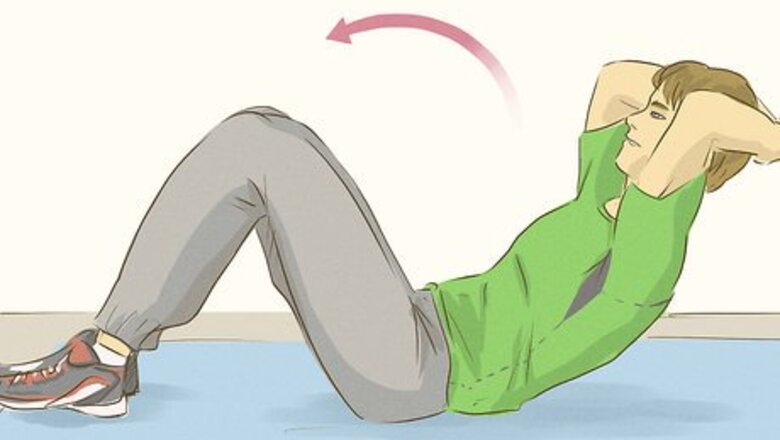
views
Doing Crunch Variations
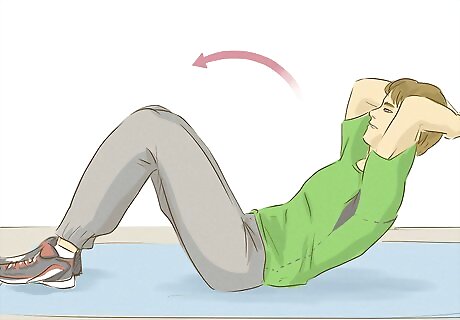
Do 4 sets of 12 basic crunches. Start by lying on your back with your knees bent and feet flat on the floor. Place your fingertips behind your head, inhale, then exhale as you raise your upper back off of the floor. Raise your torso for about 2 seconds, then gently inhale as you lower yourself back to the floor.Personal Trainer Michele Dolan suggests: "Leg lifts from a chin-up bar and the plank are two of the best and safest exercises for building abdominal muscle." Be sure not to tug your head upward with your hands. Keep your head, neck, and back aligned, and avoid arching your lower back as you lift your torso. Repeat the steps to complete a set of 12 crunches. Raise your torso just enough to lift your shoulder blades off of the ground. A crunch can safely engage your abs, but a full sit-up (or raising yourself all the way to your knees) can strain the lower back. To increase difficulty, try holding a weight over your torso as you do crunches. Start out light, such as with a 5 to 10 lb (2.3 to 4.5 kg) plate weight, to avoid injury.
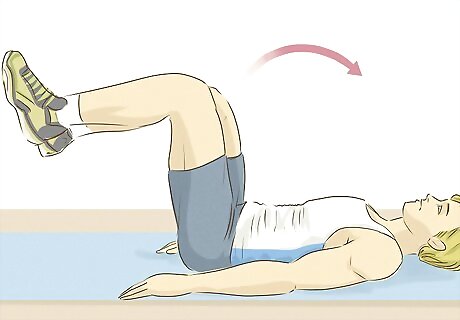
Lift your knees and hips to do reverse crunches. To start, lie on your back with your knees bent and feet flat on the floor. Keep your arms by your sides with your palms facing down. Exhale and engage your abs as you raise your knees over your hips. Keep your knees bent at a 90-degree angle as you hold them directly over your hips. Inhale, then exhale as you lift your hips and lower back off the floor with a smooth, controlled motion. Inhale again as you lower your hips back to the floor, but keep your knees above your hips. Repeat the steps to complete a set of 12 reverse crunches. After the last repetition, lower your feet back to the floor.
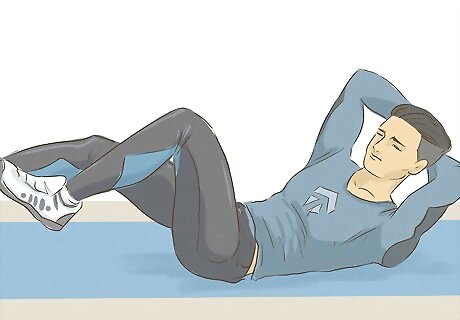
Add bicycle crunches to your routine. Lie on your back with your knees bent and fingertips touching the back of your head. Inhale, then exhale as you raise your feet off of the floor. Make a pedalling motion by driving your left knee toward your torso and extending the other straight. As you pedal, raise your shoulder blades off of the floor and rotate your torso to bring your right elbow toward your bent left knee. Then, straighten your left leg as you raise your right knee toward your torso. Simultaneously, rotate your torso to bring your left elbow toward your right knee. Continue to pedal and rotate your torso to complete 12 repetitions per side.
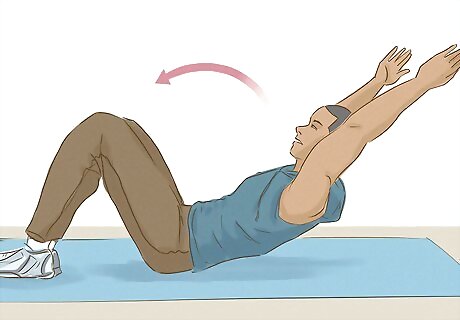
Extend your arms to do overhead crunches. Lie on your back with your knees bent and feet flat on the floor. Straighten your arms above your head with your palms facing up. Your arms should still touch the floor, and your biceps (upper arms) should be near your ears. Keeping your arms extended above your head, lift your torso as if you were doing a conventional crunch. Remember to keep your head, neck, and spine aligned, and don't arch your lower back. As with standard crunches, you can hold a lightweight plate in your hands to add resistance.
Mastering Plank Exercises
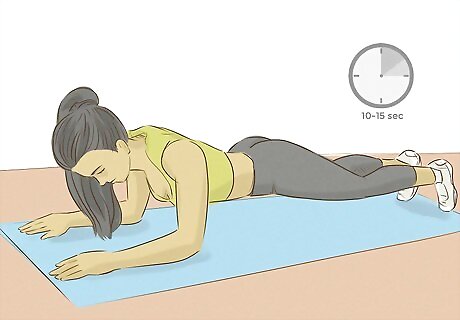
Plank with proper technique to avoid getting injured. Start by lying on your stomach with your head facing down, forearms on the floor, and palms flat on the floor. Inhale, then exhale as you lift your body off of the floor so your forearms and toes carry your weight. Keep your elbows bent at 90-degree angles directly under your shoulders. Engage your core muscles so your head, neck, and spine form a straight line. Keep your head down throughout the plank so you continually face the floor. Try holding the plank for 10 to 15 seconds. Continue to breathe as you hold the position. If planking for 10 to 15 seconds isn't challenging, try increasing the time to 30 to 45 seconds.
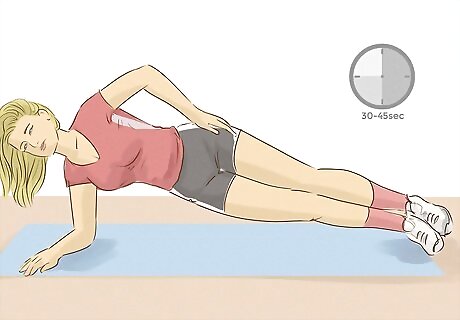
Sculpt your abs and obliques with side planks. Start by lying on your right side with your right elbow bent directly under your shoulder. Your left leg should be stacked directly over your right leg. Inhale, then exhale as you engage your core muscles and extend your elbow to a 90-degree angle. Keep your elbow bent directly under your shoulder. Your head, neck, and spine should make a straight line. Continue breathing as you hold the side plank. Try holding it for 10 to 15 seconds, or go for 30 to 45 seconds if a shorter duration isn't challenging. Slowly lower yourself back to the starting position, then repeat the steps on your left side. To increase difficulty, raise your upper leg off of your lower leg as you hold a side plank.
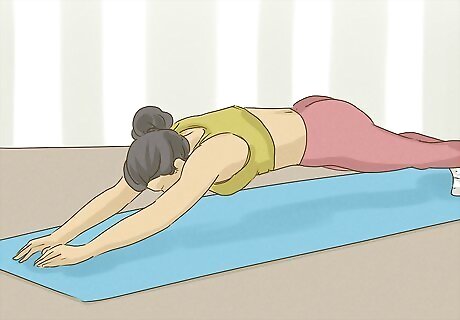
Challenge yourself with extended planks. Start on your stomach as if you were doing a standard plank. Straighten your arms above your head with your palms touching the floor. Engage your core as you use your fingertips and toes to lift your body off of the floor. Keep your head in a neutral position so you're facing the floor throughout the plank. Your head, neck, and spine should form a straight line. Try to hold the plank for 15 seconds. Continue breathing as you hold the position, then slowly lower yourself back to the floor. If you're not able to keep your back straight during an extended plank, stick to standard planks.
Developing a Safe, Effective Routine
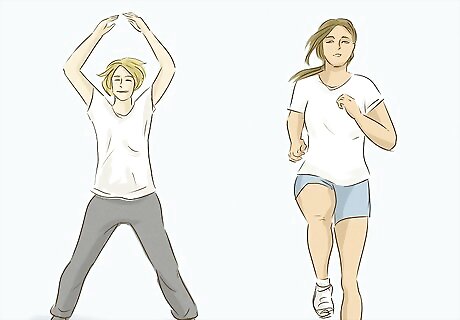
Warm up and cool down for 5 to 10 minutes. Go for a brisk walk or jog, do jumping jacks, run in place, or jump rope at the start of your workouts. Moderate aerobic exercise will increase blood flow to your muscles, which reduces your risk of injuring yourself. When you finish working out, cool down for 5 to 10 minutes to help your muscles recover.
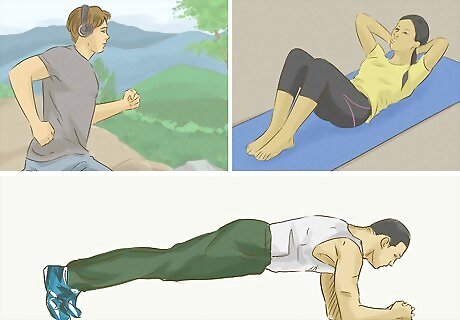
Include multiple crunches and plank variations in your routine. Instead of just trying to do 500 crunches, your workouts should consist of a variety of exercises. A good routine could be: 5 to 10-minute jog 3 sets of 12 repetitions each: standard crunches, overhead crunches, reverse crunches 3 sets of 12 repetitions per side: bicycle crunches 2 sets of 30 seconds: standard planks, extended planks 2 sets of 30 seconds per side: side planks
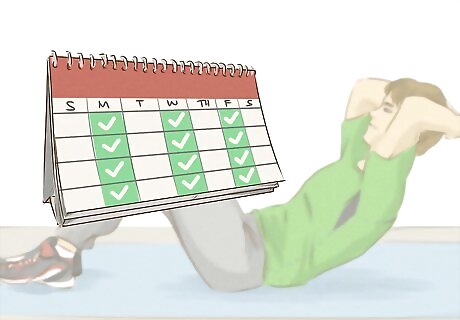
Do your ab workout routine 3 to 4 times per week. As much as you want abs fast, pushing yourself too hard could result in an injury. Avoid exercising your abs or any other muscle group on back to back days. Everyone's body is unique, but you might see results within a few weeks. Don't be hard on yourself if it takes longer. Try to focus on being as healthy as possible instead of pushing yourself and risking injury. Additionally, if you're just starting, it's wise to take it slow. Try starting with 2 sets of 10 repetitions for each exercise, then gradually work your way up to 3 sets of 12 reps. Avoid exercising or stretching if your muscles are sore. If you have a muscle strain, working out will make matters worse.
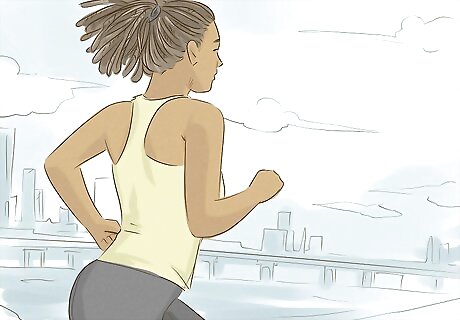
Burn belly fat with cardio exercises. To see the results of your hard work, you'll need to burn fat deposits that cover the abdominal muscles. For a good cardio workout, jog for 5 to 10 minutes, sprint for 10 minutes, then jog for another 5 to 10 minutes. Jogging, sprinting, then jogging again is a form of interval training. This type of cardio exercise is a great way to burn fat. In addition to running, you could swim laps, ride your bike, do jumping jacks, and jump rope.
Following a Fat-Burning Diet
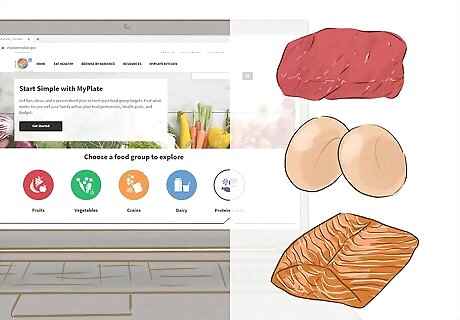
Pack plenty of protein sources into your diet. Protein helps build muscle, but it's important to choose higher-fat options. These poultry, fish, legumes, nuts, eggs, and full-fat dairy products. Go for these instead of processed meats, like bacon. The right amount of protein per day depends on your age, sex, and activity level. In general, go for at least 5 ⁄2 to 6 ⁄2 oz (160 to 180 g) of per day. For example, have 4 oz (110 g) of grilled chicken over a salad for lunch, and 3 ounces (85 g) of salmon for dinner. If you're highly active, you might need even more daily protein. Learn more about your specific requirements at https://www.myplate.gov/.

Fill up on fruits and veggies to cut your calories. Fruits and veggies are packed with essential nutrients, and they can fill you up without adding extra calories. Your required amount depends on your age, sex, and activity level. In general, go for about 2 c (470 mL) of fruits and 3 c (710 mL) of veggies per day. When you're hungry between meals, grab a healthy snack, like a banana, apple, or carrot sticks. EXPERT TIP Laila Ajani Laila Ajani Fitness Trainer Laila Ajani is a Fitness Trainer and founder of Push Personal Fitness, a personal training organization based in the San Francisco Bay Area. With over 10 years as a trainer and exercise specialist, Laila has expertise in competitive athletics (gymnastics, powerlifting, and tennis), personal training, distance running, and Olympic lifting. Laila is certified by the National Strength & Conditioning Association (NSCA), USA Powerlifting (USAPL), and she is a Corrective Exercise Specialist (CES). Laila Ajani Laila Ajani Fitness Trainer Our Expert Agrees: Being on a calorie-restricted diet will help you lose fat so your six-pack will show. In fact, most people could probably get a six-pack just through their diet, but you can also build up the muscle underneath to help you get a six-pack even faster.
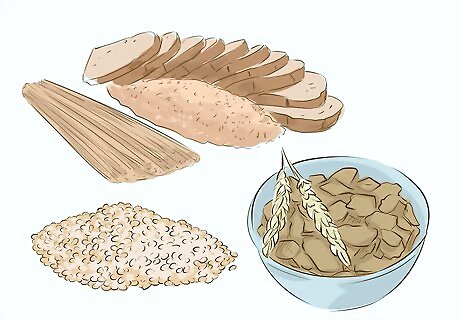
Don't skip healthy complex carbs. Grains are rich in fibre and fuel your muscles, so go for brown rice, quinoa, and whole-grain bread, kinds of pasta, and cereals. Try to consume around 6 to 8 oz (170 to 230 g) of grains per day; half that amount should be whole grains. You might have heard that you need to cut carbs to lose weight. Consider a ketogenic diet, at least temporarily, if you need to lose fat. If you're not following a ketogenic diet, healthy grains are an important part of your diet, and they provide your muscles with the resources needed to grow. Just don't overeat them.
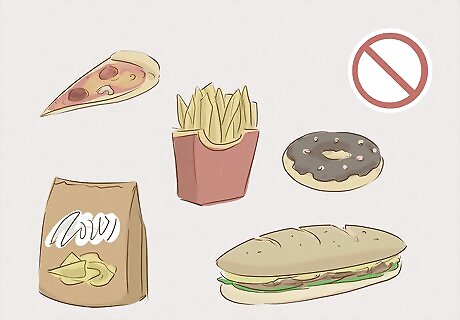
Cut out sweets and processed foods. You won't see a 6 pack any time soon if you get most of your calories from processed foods, sweets, and fast food. If you need to satisfy your sweet tooth, swap pastries, ice cream, and other unhealthy snacks for peanut butter, Greek yoghurt, and fruit. Additionally, steer clear of unhealthy snacks, like chips, and processed meats, such as deli meats and bacon.
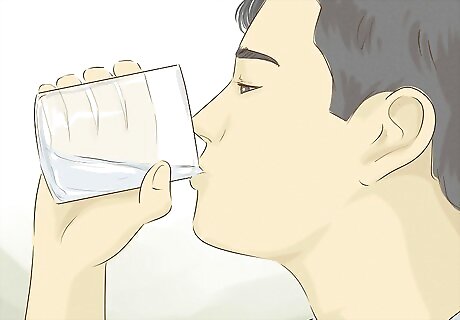
Drink loads of water instead of high-calorie drinks. Staying hydrated is important for your overall health, especially if you've started exercising more often. Furthermore, swapping soda, sweet tea, and other high-calorie beverages for water will help keep your calories in check. As a rule of thumb, go for at least 8 cups (1,900 mL) of water per day. Keep in mind when the weather's hot or you're working out a lot, you'll need to drink more to make up for excess sweating.



















Comments
0 comment